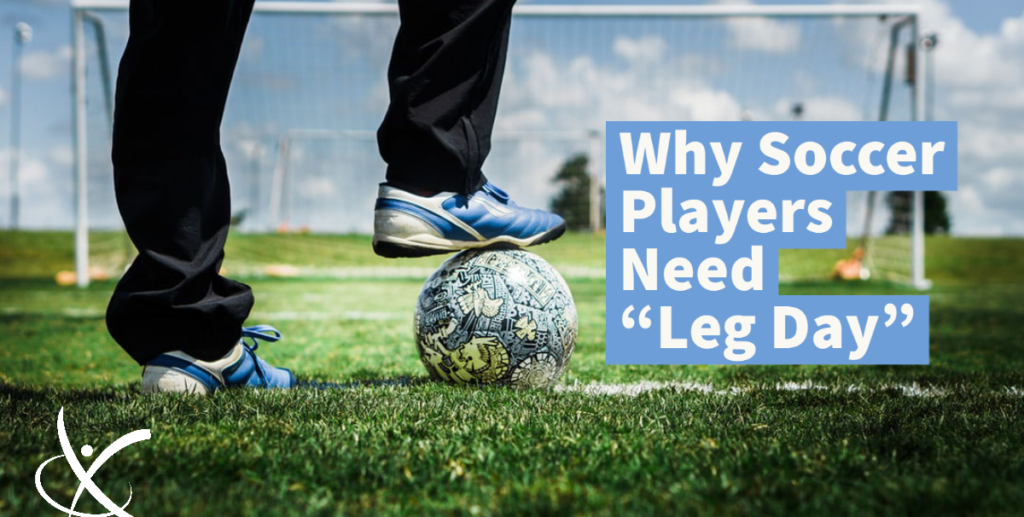Why Soccer Players Need “Leg-Day”
I’ve been spending a lot of time around the pitch lately working with injured footballers and I’ve learned something…
Many soccer players ages 13-25 don’t think “lifting legs” is important in the gym.
If you’re a loyal reader, I’m sure you know my reaction to this…YIKES.
I am a believer in strength training for all athletes as young as nine years old. I am especially a believer in footballers training in-season and out of season.
Strength training helps athletes become more resilient and injury resistant. It assists in speed and power development in turn improving agility. It can help older athletes prolong their careers. It is a way for young & developing athletes to learn more about how their bodies move. It also helps athletes improve their motor control and coordination over time.
Although these concepts are supported by ample research (did you know there are over 300+ articles published in the world of soccer annually?), players, coaches, parents & healthcare providers continue to fail our soccer athletes. So, why is the addition of strength training a foreign concept to many?
I’m not quite sure. Maybe it has to do with some “old-school” theories of strength training in the world of soccer? Or, how about a lack of education for our young footballers and coaches? Truthfully, I don’t know the exact reasoning, but I can tell you this needs to change.
When an athlete approaches me after an injury, I always ask, “What does your strength training routine look like off of the field?”
Some of the common things I hear are:
“I only lift my upper body because my legs get worked enough at practice.”
“I play soccer every day, don’t my legs work enough?”
“My legs don’t need any more muscle. I’ve heard it will make me slower.”
“Isn’t bodyweight exercise enough?”
“I was never really taught what I needed to do.”
These (and many other thoughts) are things I hear all the time from my athletes. Did you know that lower extremity injuries are the most common amongst male and female soccer players? For men, we often see groin and hamstring strains at the top of the list. For females, it’s often quad strains, knee and ankle injuries.
I am currently seeing an overwhelming number of muscular injuries early this summer season. Typically, muscle injuries occur when the tissue cannot handle the demand or intensity of the task at hand. Although this may also be due to training error (I won’t go down that rabbit hole here) or trauma, it can also be due to poor muscular strength & endurance. Why not help decrease those niggles that pop up and linger all season?
If you’ve experienced lower extremity injury as a player, what could you be doing wrong? In order to build more resilience to activity and decrease injury risk, things such as hamstrings, quads, hip flexors, hip adductors, hip abductors, hip rotators, calves, and core should be trained regularly.
If you’re in-season, 1-2x/week is recommended. If you’re out of season, 3-4x/week is preferred.
Strength training is a key to mitigate your risk for injury and improve your game. Remember, strength training isn’t all about building muscle, but improving balance, stability, mobility, and maybe even some more speed.
So, here’s to you footballers who skip leg day. I hope you learned something.
Happy Training!
-Ashley
